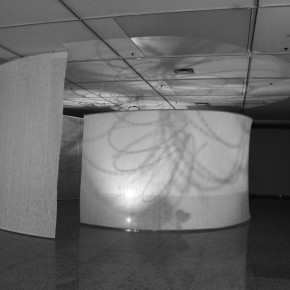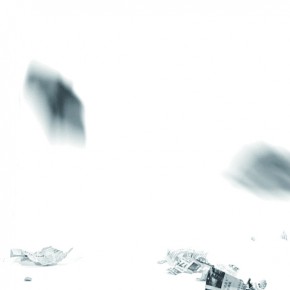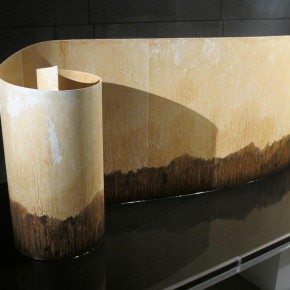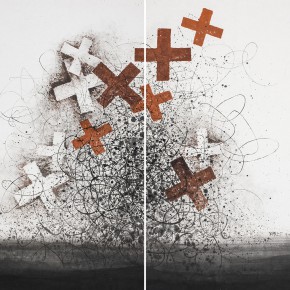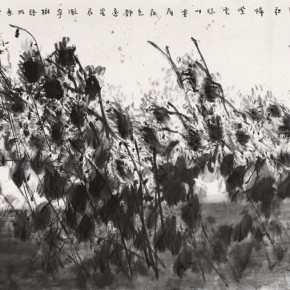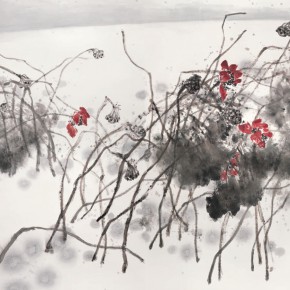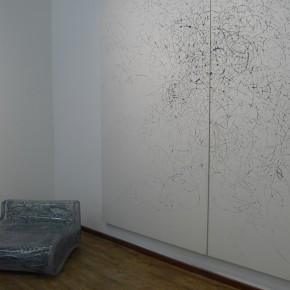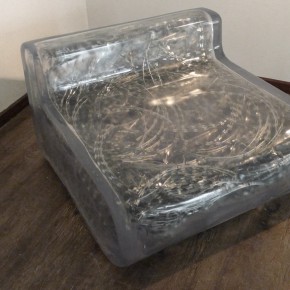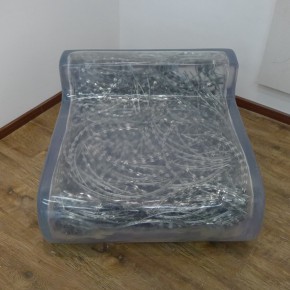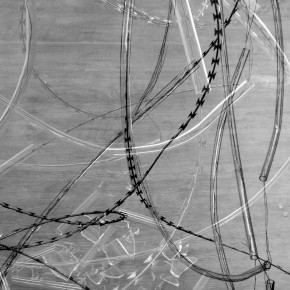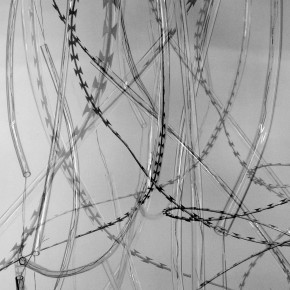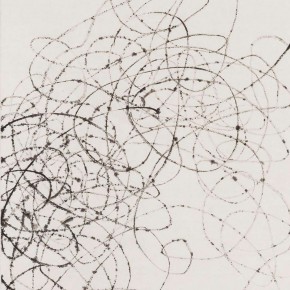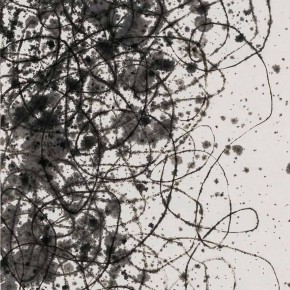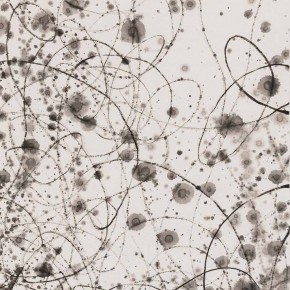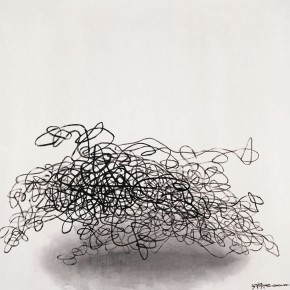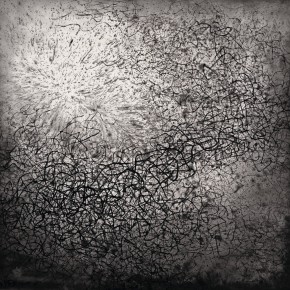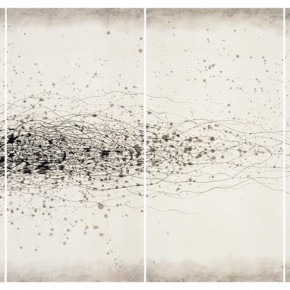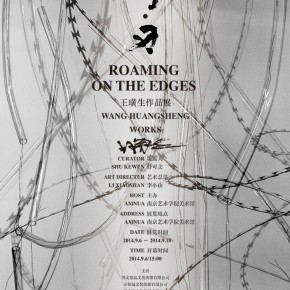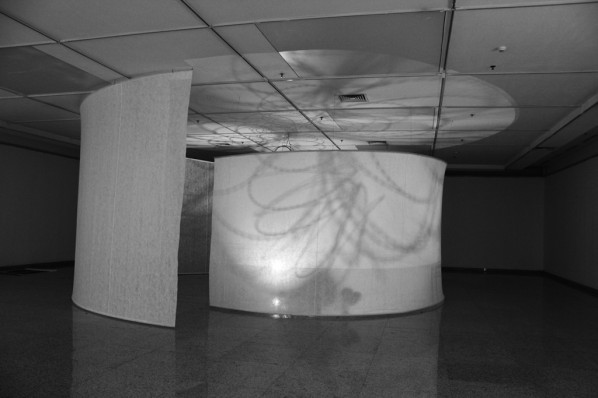
Organized by the Art Museum of Nanjing University of the Arts, and planned by Shu Kewen, Li Xiaoshan serves as the curator, “Roaming on the Edges: Wang Huangsheng's Works” is about to open at the Art Museum of Nanjing University of the Arts from September 6 to September 18 and will display more than 40 experimental works of installation that have been recently created by Wang Huangsheng including “Separating”, “Dialogue”, “Overflowing Light”, “Seeping”, video work “Halo”, ink paintings “Moving Visions”, “Threading Apparition”, “Apparition of Direction”, “Big Flowers”, and so on.
Having received his B.A. and Ph.D. in Art History from the Nanjing University of the Arts, Wang Huangsheng is a disciple of the famous expert in art history Zhou Jiyin. Currently he is the Director of the CAFA Art Museum, the doctoral supervisor, distinguished professor of Nanjing University of the Arts, the deputy director of the professional committee of the National Museum of Art, he acted as the former director of the Guangdong Museum of Art, and his published books include a monograph entitled “Art Museum as Knowledge Production”, etc., and completed a lot of constructive work during the development of Chinese art museums.
Directed by his father Wang Lanruo, Wang Huangsheng (who graduated from Shanghai Art School) studied Chinese ink painting from childhood, over the years, he insisted on retaining an independent explorative spirit and kept away from the traditional ink painting, by wandering between ink painting and contemporary art, the creation of “Moving Visions” series of works discusses the abstract expression of the brush and line of traditional Chinese ink painting as well as the relationship between the spiritual connotation and contemporary visual presentation; “Threading Apparition” series makes use of ink painting to intervene in the reality concern and free expression; the “Apparition of Direction” series expresses the conflict and transformation between society, violence and religious spirit; it emphatically displays the experimental works “Separating”, “Dialogue”, “Overflowing Light”, etc., combined with the mixed media such as iron wires, to try to express the relations such as the intersection, juxtaposition, confrontation between the poetic quality and reality, the surface and inner, fragile and cruel people, emotions, feelings, society, reality and so on; while the video work “Halo” uses sounds and images to make people think of reality, society and life, as well as nihility.
The exhibition is entitled “Roaming on the Edges”, with a flow of “roaming”, the sharp and intense conflict of the “edges”, to highlight the dual aspects of vision and emotion, experience and reality. As curator Shu Kewen said “Wang Huangsheng’s early ‘Moving Images” are more like a traditional mental state with an antique aesthetic interest, but while this aesthetic interest is placed in the current sharp and blunt real environment, it creates a tension between the aesthetic form and tough reality, and then “roaming” is not an aesthetic way, but becomes a way of handling the skill. It is a way of handling diverted from classic “moving” images rather than the logic.” Critic Wang Min’an said, “On the one hand, Wang Huangsheng emphasized ‘roaming’, on the other hand, he introduced some tough materials into his works, such as iron wires, etc. The line of ink painting is certainly inclined to flow, spontaneously flowing when it falls on the paper, however, iron wire is also a kind of line, but it is inclined to bind. They are both lines, but they feel different. It is obvious that iron wire is used in the work to serve as an extension of the line of ink painting, but it is a reversed extension, an opposite extension. These are two completely different experiences: it can also be said, roaming and the edges are two completely opposite experiences.”
“Roaming on the Edges: Wang Huangsheng Works” will open at 15:00 on September 6.
Some critics’ comments on Wang Huangsheng’s worksShu Kewen: I think “roaming” is the root of Wang Huangsheng's works after the “Moving images” series, “roaming” is a kind of conscious way for the artist, instead of a painting style it is a way of behavior, of doing things, how to deal with a conflict, how to deal with all sorts of multifarious things, to always keep changing the state which doesn’t deviate from it. I believe that “roaming” is a kind of method which he has experienced during creation.
Shu Kewen: When he considered “roaming” as a kind of thinking method, roaming played an important role. The line in his hand is neither in need of sticking to reproduction or performance, nor entangled with issues of the new and old ink painting, the only thing left is the issue of how good ink roams when it faces tough reality, sharp images, and a contradictory situation. It is obvious that the line seems to be optional, but it is different from the unconscious painting, which emphasizes more the ability of improvisation in the process of painting, or the possibility of improvisation, and to some extent it even deliberately destructs the rule or technical requirement, in order to through unconsciousness to awaken the nature restricted or suppressed by rules, deliberately reducing the technical nature, to keep the instant feeling.
Shu Kewen: When he uses glass to structure the roaming lines, the plasticity and fragility of the material, as well as the visual relationship between the direct and tough violence of the iron wires and the lines of ink painting then no longer plays so ink becomes a phantom. Here, ink is the object for Wang Huangsheng to decode, and also his method of decoding, but it is perhaps because he considers it as “roaming”, regardless of the changes of material, it will not bring damage to the identity of ink painting, and he succeeds in refusing to be encoded, so that he can continue to maintain the correlation with art.
Liu Libin: He is powerful. If expanding, the “power” is actually his active social intervention, which we can clearly see from the outstanding achievements he received while he serves as a director of the art museum. This “interventional quality” constantly hardens his spiritual world, so that he constantly goes beyond himself instead of a “traditional Chinese painter” in the traditional sense, and the transcendence firstly reflects on the gradual purity of the artistic language, such as the abstract work of “Moving Images”. The installations we see are actually the “state” of Wang expressed by a variety of art forms. When the individual thinking is in-depth, and the perception of the body is activated, there isn’t any gap in art forms.
Feng Boyi: The experimental Chinese ink paintings by Wang Huangsheng are directed towards the endless conflict between the poetic romance of an individual art experience and the realistic circumstances, trying to find a visual transformation and alienation effect with the use of multi-media.
Feng Boyi: In fact, the so-called “real and objective” in newspapers is of the cultural characteristics and ideology of the stage, while text and image is just one of the symbols. Therefore, rather than dealing with the media, Wang Huangsheng intentionally created an experimental destruction, also through collage and construction so trying to estrange these familiar contents from the inspectors, to control their expectation, so that the inspectors can appreciate the surprise produced by the processed new work, as well as enjoy the freedom after getting rid of the original propagating.
Sun Xiaofeng: When Wang Huangsheng returns to the position of an artist, he industrially searches for the power to fight against the fixed thought, through borrowing media to change the identity restricted by the painting action, meanwhile indicating that he is clearly removed the painting nature. On the one hand, “visual transformation” expands the reading of the work, on the other hand, it strengthens the impact of the work when it enters the memory vault, while the conversation of the forms of subject makes the exhibition achieve a richness and multidimensional sense of main body, it also illustrates the uncertainty of creation and the possibility of the future, namely a kind of open and unknown expectation.
Courtesy of the artist, translated by Chen Peihua and edited by Sue/CAFA ART INFO.




